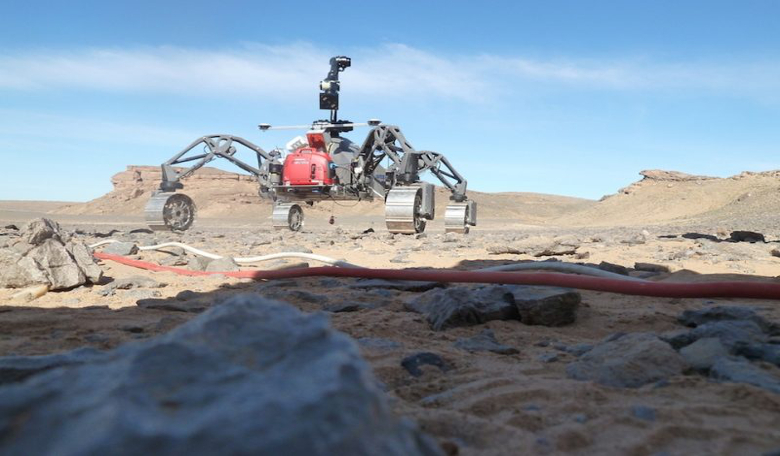A planet populated solely by robots sounds like a story from a science fiction novel, but, as far as we know it, that’s exactly what our nearest planetary neighbour – Mars – looks like. Nonetheless, the rovers traversing the martian surface are not doing so unaided. Mars’ robust and work-centric inhabitants are hand-guided by teams back on Earth. However, this imposes something of a limitation as it takes around eight minutes (each way) for a rover to receive a command after it has been issued from a control centre here on our planet. This means that any free-roaming science laboratories (rovers) are limited to travelling only a few dozen metres a day.
Now though, fully autonomous robots could soon take-over from their slower human-reliant cousins as scientists have successfully tested a suite of software systems on a would-be martian robot out in the Sahara Desert, that has travelled over 1.4 kilometres without human interaction.
Roaming around the Ibn Battuta test centre in Morocco is Sherpa; a four-wheeled rover provided by the German Robotics Innovation Centre DFKI, that is packed full of software suites designed to let Sherpa make its own mind up where to go.
Sherpa has on-board key software suites to help it function for longer periods of time on its own. These include; an autonomy framework called ERGO that enables the rover to make decisions by itself without the need for human intervention and the INFUSE Data Fusion suite, which fuses together data from different sensors and sources in order to create useful information such as maps.
The rover is also configured with a ‘plug-and-play’ approach so that sensors can be installed and removed easily according to the mission requirements at hand.
The new software systems were developed by companies and universities from around the UK including, Thales Alenia Space, Scisys, King’s College London, the University of Strathclyde, GMV-UK and Airbus Defence & Space. Airbus in Stevenage, UK is the prime contractor for the new ESA Exomars rover, due to land on the Red Planet next year in 2020.
The testing though was conducted with the help of engineers from companies spread throughout Europe such as Germany, France, Spain, Italy as well as the European Space Agency (ESA), over a month long period in December last year. The tests are part of the Space Robotics Strategic Research Cluster programme, funded by the European Commission via the Horizon2020 Programme.
Catherine Mealing-Jones, Director of Growth at the UK Space Agency, said, “Mars is a very difficult planet to land safely on, so it’s essential to maximise the discoveries from each successful touchdown. New autonomous robot technology like this will help to further unlock Mars’ mysteries and I’m delighted that the UK is a key player in this cutting-edge field.”
The UK Space Agency is the second largest European contributor to ExoMars – the first being Italy – having invested €287 (£258) million in the mission and €15.5 (£14) million on the instruments. The agency will announce the name of the new UK-built rover this spring which was chosen with the help of the public following a competition it held last year.











